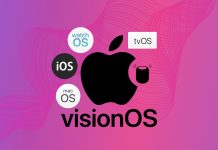
As part of my PhD project, I have had to dabble in microscopy. This did not involve sitting for hours with my eyes glued to a little contraption sitting in front of me on a desk. Instead, it involved a machine the size of coffee table set apart in a temperature controlled room on a pressurized table. Instead of looking through lenses at the specimen, the image appeared on two monitors that are connected to the microscope. And, the microscope uses lasers to generate the image. For all the microscopy experts out there, and anyone else who might be interested, I worked with a laser scanning confocal microscope from Zeiss, which I used to image green fluorescent protein found in different cellular compartments in the leaves of the plant Arabidopsis thaliana. As fun as all that technology was, when I finished this area of my work, I was left with a ton of image files that I then had to sort through to find the one or two images worthy enough to include in my thesis. For this, I used the image browser that comes with the microscope.
Josh asked me to try out Macnification, a new software program by Peter Schols and Dennis Lorson that organizes and edits images from microscopes. Had I received this program about a year ago, it probably would have prevented several headaches. It is a really great system for sorting microscope images. Files can be tagged by experiment, which allows you to attach all the details of the experimental condition to the image. They can also be tagged by keywords to allow you to easily find certain images. The files can also be sorted into different project folders. Also handy is the technical details that can be pulled out of the image files and displayed down the right side. This includes such details as the instrument used, the magnification, as well as the objective. That being said, the only detail it was able to draw out of my files was the objective used and there were some categories that were missing, such as the filter settings and wavelength of the laser used, which are definitely essential bits of information, although they are specific to the type of microscope I was using.
Macnification also provides the tools to help you edit your images. You can draw lines and other shapes on it. You can play with the exposure and the contrast. Also, another essential feature is the ability to add and modify a scale bar. There is a nice range of colours and fonts that can be applied to the scale bar as well.
By far the best feature of this program is its ability to deal with ‘stacks of images.’ With the microscope I worked with, you can take a series of images at different depths in the tissue you are working with. This allows you to get a more three dimensional view of the tissue. Macnification recognizes these stacks or allows you to create your own. You can then scroll through them or turn them into a time-lapse movie. The different views allows you to see the different images in the stack so you know how many you are dealing with.
There are also other really handy features, such as the ‘Toggle Slice’ feature which shows you a z-stack of a selected region, basically the image in the 3rd dimension. Or there is the ‘Focused Image’ feature which takes the stack of images and overlays them all into a single image, known in the scientific literature as Extended Focal Imaging (EFI) or Extended Depth of Focus (EDF), which makes something like this:
I have a feeling that if I played with this program a lot more, I would continue to find a lot of really handy functions to it. However, I do wonder if the real microscopy experts would find this program as helpful. There were certainly a few limitations that I picked up on. For instance, my images come as composite images, each pane showing the light captured using different filter sets, known as different channels, that pick up only a certain wavelength of light. They were imported into Macnification as overlays of the different channels, which means I lose the ability to look at the differet channels separately. This is important, since in publications, I would likely include each of the channels separately, as well as an overlay. I think experts in the field may find even more limitations.
Overall, I would definitely have used this program to help me to organize the images, although I likely might still have needed to use another program to do generate some of the final images.






